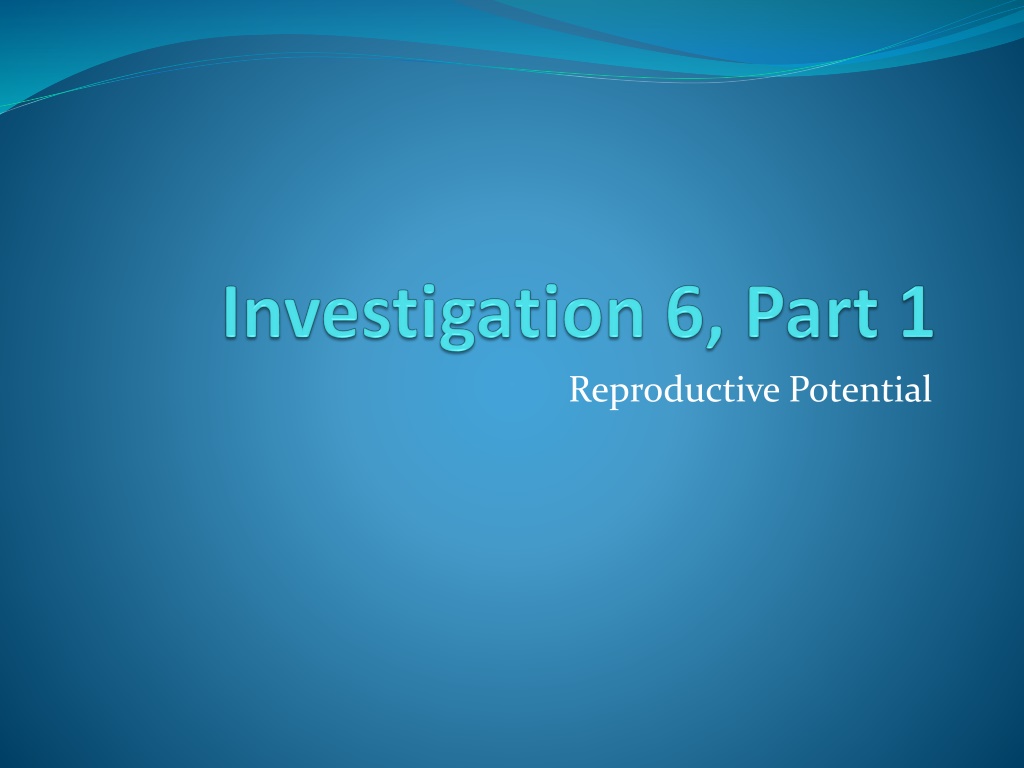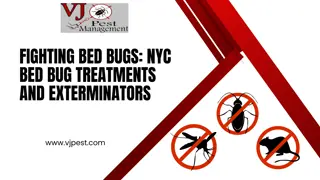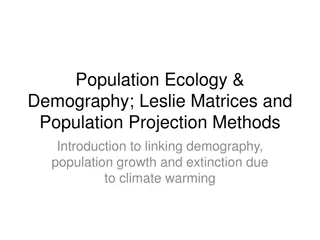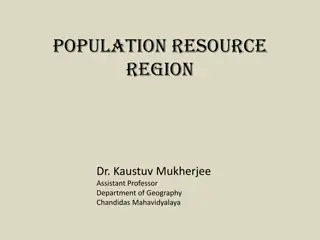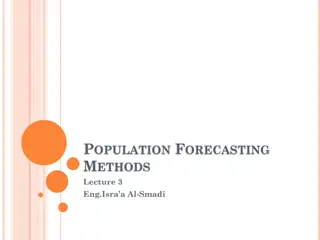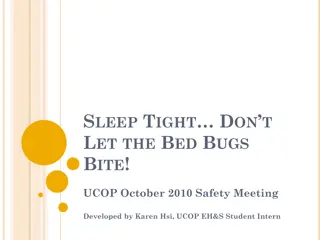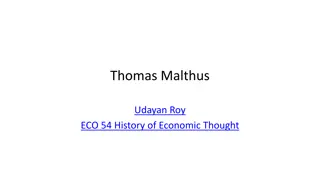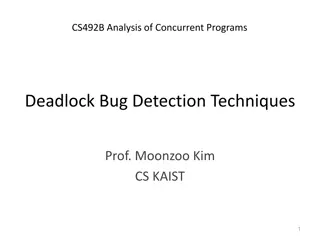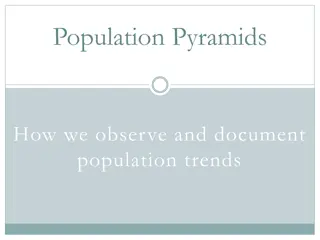Understanding Population Growth in Milkweed Bugs
Explore the reproductive potential and population dynamics of milkweed bugs in this interactive study. Learn how population size changes over time, considering factors like reproduction, lifespan, and generation turnover.
Download Presentation

Please find below an Image/Link to download the presentation.
The content on the website is provided AS IS for your information and personal use only. It may not be sold, licensed, or shared on other websites without obtaining consent from the author. Download presentation by click this link. If you encounter any issues during the download, it is possible that the publisher has removed the file from their server.
E N D
Presentation Transcript
Warm up What is a population? All the individuals of a species that are living in an area at one time.
Reproductive Potential Every population has the potential to increase in size. Some have potential to grow slowly and steadily while others have the potential to grow rapidly. If you have the proper information, you can calculate the potential for population growth for any organism. The theoretical unlimited growth of a population over time is called reproductive potential.
Milkweed Bugs Look on lab sheet 27. Look over the data silently. Entomologists (People who study bugs) have discovered some general information about the lives of milkweed bugs living in the wild. That information is written on the question and answer chart on your lab sheet. Based on this information, you should be able to figure out the population after one month, two, four, etc, as long as nothing is limiting their population growth.
Get out your calculators! Lets complete the first one together. You will now do the rest on your own. Go in 2 month intervals. 2, 4, 6, 8, one year (12).
Think.. Who has children/offspring? Only females. How many children/offspring are female? Half. Who are the parents in each generation? The offspring from the previous generation. How long do they live? 4 months Population reduction? Calculate the new generation of offspring and add to it only the number of parents who produced them. Bugs older than the parents of that generation will be dead. (The grandparents)
Results Without any limitation on population growth, every egg produces a new individual in the population and every individual lives out its natural life, 4 months. Only females produce eggs. Half the population is female. Both males and females are 2 months old when they reach maturity and mate, and the females produce 100 eggs. (Or you could say 50 eggs per bug.) When a generation reaches maturity, their parents are 4 months old and die. Dead bugs must be subtracted from the population. The population at any time is the number of immature milkweed bugs and their parents, minus their grandparents.
So.. How many is that? A pair of milkweed bugs has the potential to produce a population of almost: 32 BILLION! This number of bugs would: Circle the earth 8 times. Nose to tail. Covered about 8 football fields, but not stand on top of each other. Have a mass equal to 30,000 average middle schoolers. Fill about 12 average middle school classrooms floor to ceiling.
Whats the problem? Clearly milkweed bugs do not increase in population at the rate we calculated. What prevents this rate of growth from occurring? Discuss .
Limiting Factor Any biotic or abiotic factor that acts in some way to limit the number of individuals that survive and reproduce in a population. What are some factors that might limit milkweed bugs in nature?
Review What happened on lab sheet 27? What was our data? Example: how many bugs did we start out with? How long did they live? How many eggs were produced? Mature in 2 months Lifespan of 4 months Produced 100 eggs per female 100% of eggs hatched and produced offspring 32BILLION bugs! What would happen if ONE variable was changed? What if they laid 150 eggs?
Simulation We can use the computer to calculate the reproductive potential of the milkweed bugs with different characteristics than the one we investigated. What happens when we limit size? Now you try. Use lab sheet 29 to investigate different limiting factors. What were your results. We will discuss as a class.
6.1, Day 2-finish lab sheet 29 Finish the lab sheet from yesterday. Answer questions 1, 2 and 3. Which factor had the largest effect? Volume-the bigger the volume, the more bugs there were. At 400, the population was only about 200 Which are biotic? Abiotic? Biotic-Number of females, clutch frequency, clutch size Abiotic-Volume of space Both-Survival could be abiotic (temp/water) or biotic (predators)
How does each act as a limiting factor? Volume limits space and how many organisms can live in an area. Females per 100 limits the number of adults that can reproduce. Clutch frequency changes how often they can reproduce. Eggs per clutch changes the number of offspring, which will alter how many adults will be able to reproduce. Survival rate changes the number of offspring that grow to adults to then reproduce.
Investigation One critical factor in the reproductive cycle of the milkweed bug is the successful hatching of eggs. If eggs do not hatch, the population will not increase. I have data from an experiment in egg hatching. We have a record of the experimental procedure and the data collected.
Review Data Review the purpose and design on page 31. Study the data on page 32 to see what effect each variable had on egg hatching. Summarize the results on page 33. Write in complete sentences. Use EVIDENCE from the experiment to support your conclusions. Be specific. Example: The environment best for egg hatching is______. It produced ______ more eggs than the other environments.
Analyze the Data Humidity and light? Do they limit the hatching? There is not data to support that. Temperature? Yes. Below 10 degrees C and over 40 degrees C seem to prevent hatching. Eggs at 20-40 degrees C hatch in large numbers. Cooler temps can extend the time.
Wrap Up Ecologists use many different methods to get information about ecosystems. One way is through lab experiments. They bring some of the natural world into the lab and focus on one part of it. Variables can be carefully controlled in the lab to determine cause and effect relationships. They can also use field observations and computer models.
